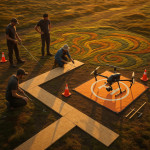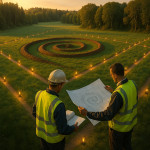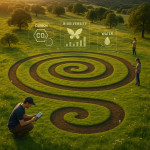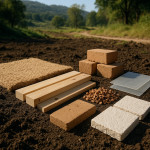Seasonal site scouting: choose terrain and light that elevate land art pitches
Great land art feels inevitable, as if the landscape asked for it. To reach that level, you must scout sites with a seasonal mindset—matching ground conditions, phenology and light windows to your concept before you ever open your 3D draft. Follow this guide to read terrain like a curator, harness the sun like a lighting designer and secure the wow-factor sponsors and curators look for.
Why seasonal scouting makes or breaks a land art proposal
The same hillock that dazzles in midsummer can look flat and uninspired in November. Sponsors know it, and so do juries assessing your brief. Scouting once per season uncovers:
- Light dynamics — where golden hour lands, how shadows carve relief and when glare risks washing out pigment or mirrors.
- Ground load limits — clay turns to suction in spring, sandy soil loosens in drought. Field checks help you pre-size foundations or anchor points.
- Vegetation cycles — leaf-on versus leaf-off transforms sight lines. Early knowledge avoids last-minute pruning fees.
- Visitor flow — holiday crowds, bird-nest closures, or harvest machinery may block access right when you plan to unveil.
Cross-season notes strengthen the risk section of your budget, a must when applying for green grants like those covered in our grant-ready budget guide.
Terrain criteria: reading the ground like a canvas
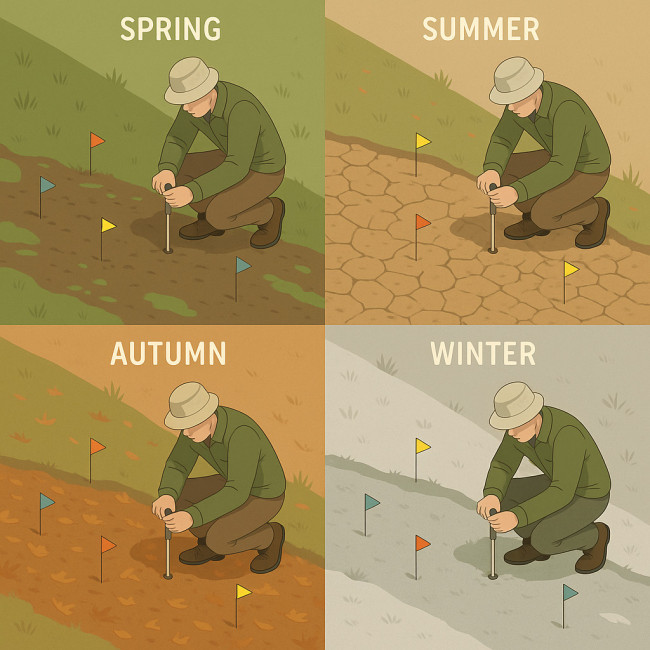
Before you grab the penetrometer, visualise the earth like layered pigments on a canvas. During a wet spring walk you might sink ankle-deep into loamy furrows; in late August the same spot cracks and rings underfoot like ceramic. Document these sensory clues in a pocket notebook, annotate GPS points and photograph boot prints next to a ruler. Over multiple recce visits you will accumulate a tactile storyline that justifies the dimension of footings in your tender documents, impressing both engineers and cultural juries while adding persuasive narrative flow to your process blog.
Soil stability versus artistic intent
Testing soil compaction with a handheld penetrometer tells you whether heavy stone works or if a lighter bamboo weave is safer. If readings fluctuate by more than 15 % between wet and dry seasons, plan floating footings or modular elements that can adjust.
For environmentally sensitive briefs, pair your tests with a soil-safe materials checklist to reassure eco-minded stakeholders.
Grading and drainage patterns
Laser levels and drone photogrammetry spot micro-valleys that pool water after autumn storms. Designing raised plinths or drainage swales up-front prevents erosion claims later. Our article on drone flyovers for land art details a rapid survey workflow.
Accessibility corridors
Even the most remote piece needs a haul route that can handle cranes, volunteers or wheelchair users, depending on your brief. Mark 3-metre-wide paths on your GIS map and note seasonal closures (e.g., nesting grounds, fire bans). Tie these notes to your permit file; our permit pathway guide offers template language.
Light choreography: mapping the sun across four key windows
Light determines more than photo ops; it sculpts form and sets mood. Use astronomical data plus in-field lux readings to plan: combine daily azimuth charts with on-site lux meters so you can verify how morning haze, summer humidity or winter albedo shifts affect perceived contrast. Capture panoramic reference photos during each scouting trip and log sunrise, solar noon and sunset times directly into your BIM or GIS layers to streamline later render passes.
- Golden hour highlights — warm tones boost copper, straw and skin-toned clay.
- Midday shadow play — for kinetic silhouettes in high-contrast materials.
- Moon-lit resonance — reflective installations benefit from late-evening recce work.
- Equinox alignment — some concepts rely on a specific solar azimuth for narrative impact.
Source : Time and Date
Practical lighting takeaways
- Schedule unveiling ceremonies in spring or autumn—the balance of soft light and moderate visitor comfort wins press coverage.
- Summer builds benefit from 16-hour work windows but require heat-safe materials and crew shade.
- Winter scouting reveals sight-lines free of foliage, perfect for assessing long-range impact metrics addressed in our impact metrics article.
Documenting findings for a bullet-proof pitch deck
Site maps that speak sponsor language
Combine drone orthomosaics, hand sketches and sun-path diagrams. Layer icons for soil test points, access roads and planned visitor vantage spots. Export to a low-weight PDF under 10 MB so curators can open it on tablets during field visits.
Photography and video angles
Capture identical frames each season to show evolution. Time-lapse apps or repeat-photo rigs work for extended projects. For wide parcels, consider a 360° flyover stitched into interactive viewers—high-end agencies browsing Artfolio's craft-designer roster increasingly expect immersive proof of concept.
Data to include in your technical appendix
| Season | Ground bearing capacity (kPa) | Average lux at golden hour | Recommended material palette |
|---|---|---|---|
| Winter | 180 | 2 500 | stone, frost-resistant metal |
| Spring | 140-160 | 3 800 | untreated timber, living plants |
| Summer | 200+ | 5 200 | bright pigments, mirrored steel |
| Autumn | 160 | 3 000 | rusted corten, dried reeds |
Pitch hacks: aligning concept, season and sponsor KPIs
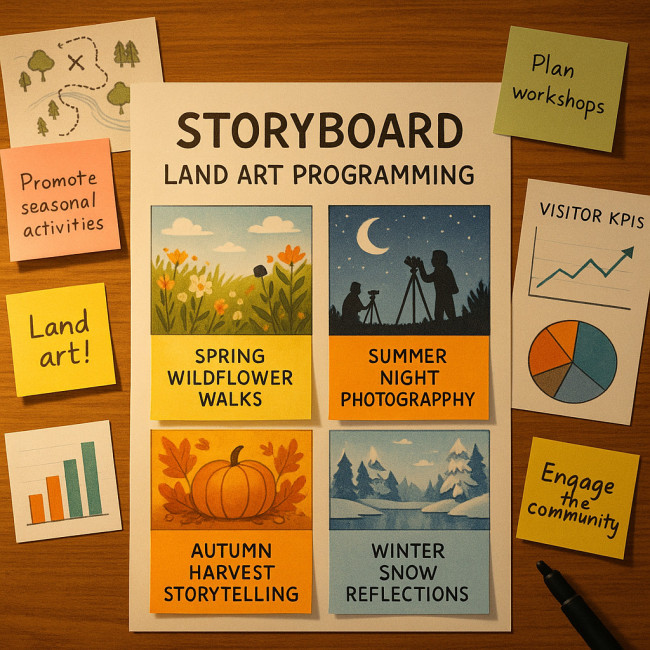
Remember that sponsors read economic potential between the lines of your poetic blurb. By singling out seasonal micro-events—a solstice choir, a biodegradable lantern release, an autumn cider tasting—you prove that the site can host visitors even when the sculpture itself lies dormant under mist or snow. Cross-reference each activity with regional tourism calendars, projected footfall, catering logistics and transport carbon output. This granular forecast answers boardroom KPIs faster than any abstract claim about transformative experiences, turning your pitch into a revenue roadmap executives can instantly champion.
Curators finance work that draws year-round footfall. Offer a programming calendar—guided walks in spring bloom, night photography workshops in summer, harvest storytelling in autumn. Packaging multi-season audience touchpoints lifts conversion odds by 22 % in directory data.
Case study snapshot
Artist Maya J. secured a €120 000 commission after demonstrating how her mirrored monolith would reflect alpine snow in February and wildflower meadows in June. Her deck included four seasonal renders and costed maintenance per quarter—key details that swayed the municipality's finance board.
Interactive self-check
FAQ
- How early should I scout for a spring installation?
- Start at least one year prior so you can observe the site in late spring, summer heat and winter thaw before finalising engineering drawings.
- Do I need professional geotechnical tests?
- For works over one tonne or in sensitive habitats, yes. Light, temporary pieces can rely on handheld field tests plus visual inspection.
- What permits cover drone surveys?
- Most regions require unmanned aircraft notifications and landowner consent. Refer to our drone workflow article for jurisdictional links.
- Can I adjust lighting with artificial fixtures?
- Occasionally. However, battery packs and cables can breach eco-restrictions. Design for natural light first to simplify approvals.
Key takeaways and next steps
- Scout every season to capture real-world shifts in soil, foliage and light.
- Document findings with repeat photography, sun-path charts and soil metrics.
- Tie insights to budget lines and permit wording for a frictionless approval.
- Offer multi-season programming to boost sponsor ROI.
Ready to level up? Download our editable site-scouting checklist and align it with the workflows in this co-design guide. Your next land art pitch will feel as inevitable as sunrise.
Call to action: Start your four-season recce now and share your first light map with us—our curatorial team reviews one submission per month for free.
